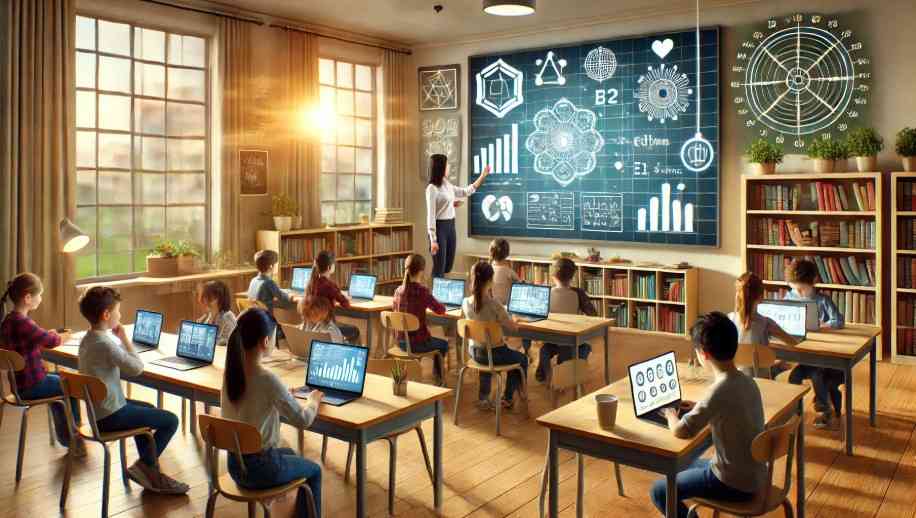How Digital innovations help to transform Valdymas College of Advanced Studies and Digital Transformation.

Transforming educational institutions through technology involves leveraging innovative solutions to enhance learning, learning experiences, simplify administrative processes, and ensure improved allocation of resources to drive digitalization. Learning should be adapted towards solving real problems in our unique world. Learning should be original to the learner and therefore, the voice and choice of the learner should be the primary driving factor with support from the teachers and school leaders. When we as learners are given the freedom of choice to make meaningful connections and reflections as part of our learning process then we get the benefits in COVA and a growing mindset. (Harapnuik, D. K., Thibodeaux, T. N., & Cummings, C. D., 2017). The application of technology to drive the learning process and experience has ensured this is done to scale and the art of personalized learning to help learners showcase their works.
Leveraging digital learning platforms such as – Learning Management Systems (LMS) and Virtual Learning Environments (VLE) helps to prepare our students for improved learning experience. These digital enhancements allow them to have personalized learning, deep reflections and make meaningful connections. Our approach as teachers should allow for rational analysis in classes to support digital enablement for personalized learning. And support students to leverage their understanding to birth new ideas relevant to their world. I tell my students that active learning helps them manage their lives actively.
The ePortfolio initiative helps learners to leverage digital platforms to own our content and showcase their work. Creating a significant learning experience – CLSE + COVA – The Power of Significant Learning Environments is crucial because it is the platform for students to engage in their authentic learning. Students create contents and designs it the way it resonates with them. Creating a significant learning environment (CLSE) with choice, ownership, voice, and authentic learning experiences (COVA) is key to driving active learning. (Harapnuik, D. K, Thibodeaux, T. N., Cummings, C. D., 2018).
My transformational goal going forward is to build the digital experience at Valdymas College to become part of the environment in which each student is learning, enhancing their engagement, and forming a learning community or learners circle. Formulating this community of knowledge will lead to an enhanced learning environment for all students on the ValdymasCAPs platform. This is an online learning environment which is mobile friendly that we are building in house to institutionalize learning for our students. Hence, we are transferring from the vendor learning management system to in house which gives us more customizations and control of the back end support.
With the accelerating pace of new technologies applied for improving learning and communalization of learning experience to drive lifelong learning system. We will be following these steps:
- Identification of a learning problem or an opportunity to address with digital enhancements.
- Engage the community of learners in discovery sessions to understand the problem and propose a solution directed digitally.
- Discuss teaching and learning models and methods to ensure they fit the context of the school system or school.
- Define a vision, goals, and measurements which is digitally appropriate.
- Select digital technologies that support your goals — and make sure that the technology infrastructure can support these technologies.
- Provide professional development for leaders and teachers.
- Foster a supportive school climate and culture in the educational community.
Conclusion
Create flexible teaching and learning environments. – which is not rigid to an approach but supports dynamic, agile, incremental, and iterative drive to solution adaptations to problems. We will continue to leverage innovations in mobile device powered personalized learning models, blended learning experiences, cloud infrastructure, augmented, virtual reality, data analytics and adaptive technologies to power learning (Daim, T.U., Boss, V., Thomas, J. et al., 2016).
References
- Daim, T.U., Boss, V., Thomas, J. et al. (2016). Evaluating technologies for education: Case of ePortfolio. Technol Innov Educ, 2(4)https://doi.org/https://doi.org/10.1186/s40660-016-0010-8
- Harapnuik, D. K, Thibodeaux, T. N., Cummings, C. D. (2018). Creating significant learning environments through choice, ownership, voice, and authenticity. (First ed.)
- Harapnuik, D. K., Thibodeaux, T. N., & Cummings, C. D. (2017). Using the COVA learning approach to create active and significant learning environments. In Keengwe, J. S. (Eds.), Handbook of Research on Digital Content, Mobile Learning, and Technology Integration Models in Teacher Education.,
